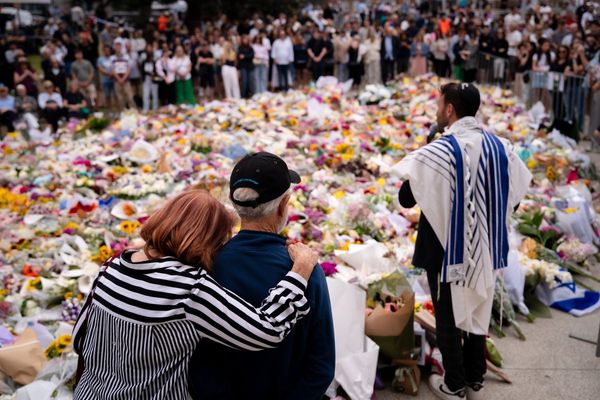
Indian ‘heroes’ are, invariably, upper-caste. From history textbooks to mainstream cinema, the figures we are encouraged to admire, emulate, and celebrate overwhelmingly come from traditional Savarna backgrounds – be it a freedom fighter, a war hero, or a cinematic icon. A few rare exceptions exist, like director Ananth Mahadevan’s latest film Phule, which is based on the lives of anti-caste social reformer couple Jyotirao and Savitribai Phule.
By bringing the story of a Shudra revolutionary couple to mainstream cinema, Phule expands India’s public iconography by including those long marginalised in the telling of the nation’s story. Despite its earnest and factual portrayal of the lives of the Phules, the film, underexplores Savitribai’s work, flattens out a few historical complexities and indulges in melodrama when it shouldn’t.
Phule, which released on April 25 under the banner of Zee Studios, stars actors Pratik Gandhi as Jyotirao Phule and Patralekhaa Paul as Savitribai, and Vinay Pathak, Akshaya Gurav, and Darsheel Safary in supporting roles.
The film starts in the final decades of the 19th century with a poignant scene: Savitribai attending to bubonic plague patients. The narrative unfolds through flashbacks, transporting us into a rigidly caste-stratified society. Jyotirao, addressed affectionately as ‘Sethji’ by Savitribai, begins educating her – a revolutionary act that draws hostility, first from their own family and then from the upper castes more broadly.
In an early confrontation, an outraged group of men sneers, “Himmat kaise hui humari ladkiyon ko padhane ki? (How dare you try to educate our girls?).” Followed by another line dripping with contempt: “Padh likh kar kisi purush ko chithhi bhi to likh sakti hain. (After getting educated, they might even write a letter to a man.)” This may sound archaic to some, but in rural north India, these views, or their variations, persist across families, villages, and casual conversations.
Phule successfully recreates the casteist, patriarchal and misogynistic notions of Brahmanical purity that regulated most spheres of everyday life in 19th century India. It was this order that Jyotiba and Savitribai dared to challenge. In their struggle for women’s education and securing their dignity, they find friendship and solidarity among social reformers Usman Sheikh and his sister Fatima, and some progressive Brahmin allies.
The couple, however, faced both personal and societal obstacles in doing so. They were evicted from their home, and in one particularly jarring scene – already the subject of controversy before the film’s release – some children hurled cow dung at Savitribai and Fatima. The film’s historically documented humiliations reflect the deeply ingrained social hostility toward the Phules and other social reformers.
Largely orbits around Jyotiba
Nevertheless, the film frequently presents Savitribai in an uneven manner. While she is given space as an educator and activist, the narrative still largely orbits around Jyotiba. The radical edge of Savitribai’s writings and feminist politics – her denunciation of Brahminical patriarchy, her poetry – is underplayed. Despite ample opportunities, the film fails to include a single quote from Savitribai’s writing.
At moments, the film also slips into dramatic overstatement. In one such instance, a group of Brahmins asserts that English education directly attacks Sanskrit, a claim that seems more theatrical than historically accurate. Similarly, in another scene, a British district collector declares that “lower-caste people are simply not interested in education” and then, in the typical Captain Russell’s ‘doogna lagaan’ style, asks Jyotirao to open 25 schools.
They did open schools, inviting girls from all walks of society, even at the cost of inviting personal risks. One of the film’s more radical and quiet moments is the mention of Mukta Salve’s 1855 essay, which stands as one of the earliest articulations of Dalit literary consciousness. Another such moment is an understated yet powerful scene in the movie where the Phule couple dig a well in their courtyard to provide water for people of all castes. It attempts to tick off all the major milestones in the Phules’ lives – the founding of the Satyashodhak Samaj, the publication of Gulamgiri, the establishment of a widow ashram, and the conferring of the title ‘Mahatma’ on Jyotirao by Sayajirao Gaekwad.
The film commendably pays attention to historical accuracy in portraying these events. However, in trying to cover too much, the film sometimes flattens historical complexities. For example, while untouchability is a constant underlined theme, it remains under-theorised onscreen. In one scene, the film shows a group of Brahmins running backwards from the shadow of Jyotiba, which seems like another historical inaccuracy. Phule discussed the difference between Shudras and untouchables, or Atishudras, who were so deeply stigmatised that even their shadow was considered polluting by the so-called upper castes. By showing Brahmins treating him as an untouchable, the film ends up flattening the specificity of his experience, just like the term Dalit.
The film shows Savitribai using the term, Dalit to describe Shudras, which is anachronistic as Dalit as a political term became popular only in the 20th century.
Fatima Sheikh’s character represents yet another overlooked opportunity. Her portrayal is underwritten, almost meek. In contrast, one of the film’s most charged scenes comes when Savitribai slaps an upper-caste man who threatens to kill Jyotiba. The screen and the theatre get electrified by a moment of political resistance in which a Shudra woman physically opposes caste terror.
The film opens a door
Visually, the film is stunning. Pratik Gandhi’s performance is earnest, measured, and persuasive. Patralekhaa brings conviction to her role.
The film closes with the couple’s natural deaths – portrayed with restraint and, thankfully, without melodrama – followed by a closing message suggesting that caste discrimination is fading and women’s status has significantly improved. To some extent, this is true. Caste hierarchies have for sure weakened in many parts of India, and women have certainly made some progress in all spheres of public life. For that, we owe much to the sacrifices of social reformers like Jyotirao and Savitribai Phule. But at the same time, caste remains a persistent and brutal social reality. Caste panchayats continue to police the social behaviour of women in many parts of the country. Dalits are still shamed, attacked, and even murdered.
“We can’t change history,” the film says, “but we can learn from it.” Phule opens that door – but whether we, as a society, choose to walk through it, remains an open question.
The writer is a researcher with an interest in South Asia and caste.
Correction on May 7: An earlier version of the article said, “Similarly, Maharaja Gaikwad equating Phule with Martin Luther King Jr. was another historical inaccuracy that the film research team missed.” We have removed the sentence as it was inaccurate.
If you’re reading this story, you’re not seeing a single advertisement. That’s because Newslaundry powers ad-free journalism that’s truly in public interest. Support our work and subscribe today.
Newslaundry is a reader-supported, ad-free, independent news outlet based out of New Delhi. Support their journalism, here.







